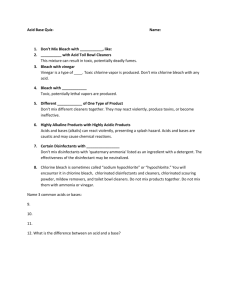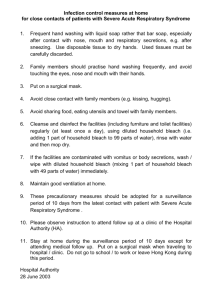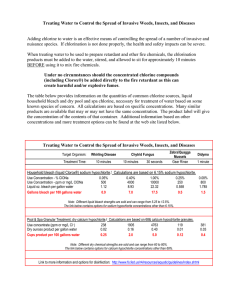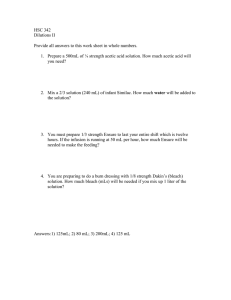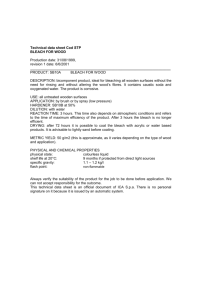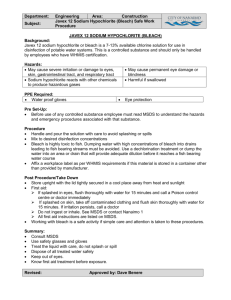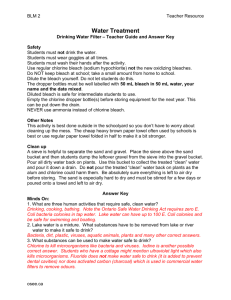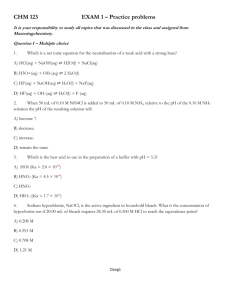Common Cleaning Products May Be Dangerous When Mixed
advertisement
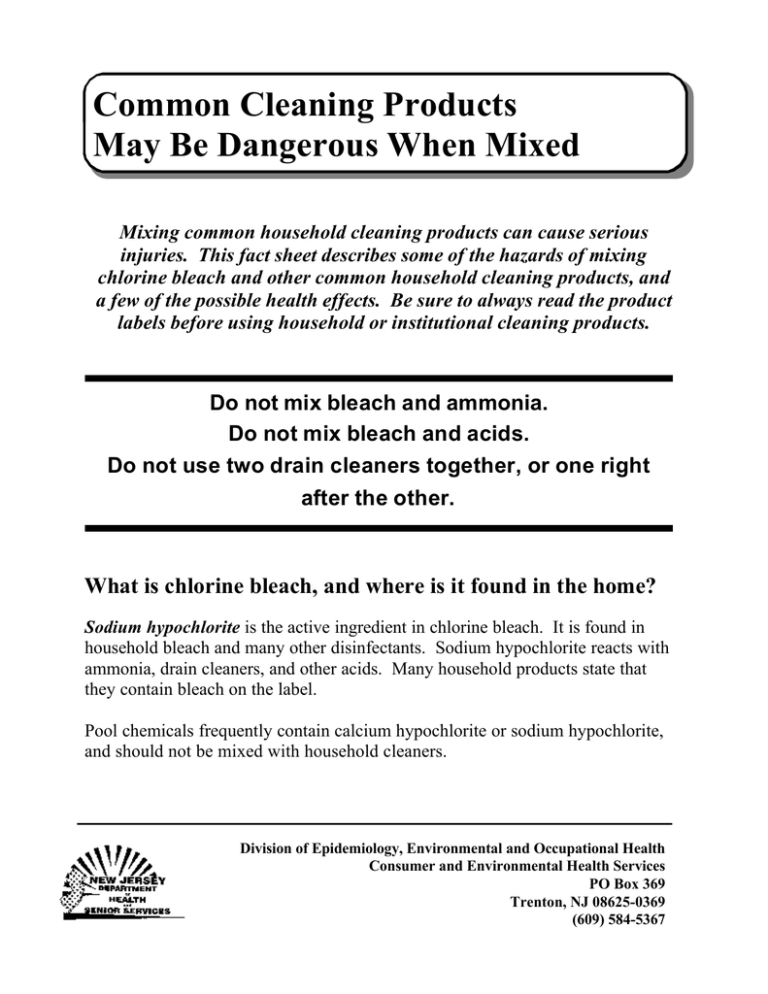
Common Cleaning Products May Be Dangerous When Mixed Mixing common household cleaning products can cause serious injuries. This fact sheet describes some of the hazards of mixing chlorine bleach and other common household cleaning products, and a few of the possible health effects. Be sure to always read the product labels before using household or institutional cleaning products. Do not mix bleach and ammonia. Do not mix bleach and acids. Do not use two drain cleaners together, or one right after the other. What is chlorine bleach, and where is it found in the home? Sodium hypochlorite is the active ingredient in chlorine bleach. It is found in household bleach and many other disinfectants. Sodium hypochlorite reacts with ammonia, drain cleaners, and other acids. Many household products state that they contain bleach on the label. Pool chemicals frequently contain calcium hypochlorite or sodium hypochlorite, and should not be mixed with household cleaners. Division of Epidemiology, Environmental and Occupational Health Consumer and Environmental Health Services PO Box 369 Trenton, NJ 08625-0369 (609) 584-5367 Where are ammonia and acids found in the home? Ammonia: In addition to ammonia purchased as a cleaning product, ammonia may be found in the following: • some glass and window cleaners urine (be careful if you clean cat litter boxes or use a diaper pail) • • some interior and exterior paints. Acids: Products containing acids include: • • • • vinegar some glass and window cleaners some automatic dishwasher detergents and rinses some toilet bowl cleaners • • • some drain cleaners some lime, calcium and rust removal products some brick and concrete cleaners What are the dangers of mixing these common cleaning products? Mixing bleach and ammonia: When bleach is mixed with ammonia, toxic gases called chloramines are produced. Exposure to chloramine gases can cause: coughing nausea • • • shortness of breath • watery eyes chest pain irritation to the throat, nose and eyes • • • wheezing • pneumonia and fluid in the lungs Mixing bleach and acids: When chlorine bleach is mixed with an acid, chlorine gas is given off. Chlorine gas and water combine to make hydrochloric and hypochlorous acids. Chlorine gas exposure, even at low levels, almost always irritates the mucous membranes (eyes, throat, and nose), and causes coughing and breathing problems, burning and watery eyes, and a runny nose. Higher levels of exposure can cause chest pain, more severe breathing difficulties, vomiting, pneumonia, and fluid in the lungs. Very high levels can cause death. Chlorine can be absorbed through the skin, resulting in pain, inflammation, swelling, and blistering. Hydrochloric acid also causes burns to the skin, eyes, nose, throat, mouth and lungs. Mixing bleach and other cleaning products: Bleach also reacts with some oven cleaners, hydrogen peroxide, and some insecticides. Where can I get more information on bleach or on specific products? The Chlorine Institute website provides consumers with much information on bleach and other chlorine products. Especially helpful is the Sodium Hypochlorite Incompatibility Chart. http://www.cl2.com/ (website) http://www.cl2.com/whats_new/NaOClCompatChart.pdf (Incompatibility Chart) The product label usually has a toll-free telephone number that you can call to learn more about the product you have purchased. Most manufacturers also have web sites with product information. Here are a few. The Clorox Company, makers of Clorox® Bleach, Liquid Plummer®, and other household and automotive cleaning products. http://www.clorox.com/ Church and Dwight Company Inc., makers of Parson’s Ammonia®, SNOBOL Toilet Bowl Cleaner®, and the Arm and Hammer® line of products. http://www.churchanddwight.com/ Proctor & Gamble, makers of Mr. Clean®, laundry detergents, and other household products http://www.pg.com/ Reckitt Benckiser Inc., makers of Lysol®, Resolve®, Easy Off Oven Cleaner®, and many other household and professional cleaning products. Material Safety Data Sheets (MSDS) are available on their site. http://www.reckittprofessional.com/ SC Johnson, makers of Windex®, Drano®, Vanish®, and many other household products http://www.scjbrands.com/ Where can I report an emergency? New Jersey Poison Information and Education Center: 1-800-222-1222 Your local hospital emergency department: ________________________________ Your health care provider: ________________________________ Your local emergency services: 911 or ________________________________ For non-emergency information please call the Hazardous Substance Emergency Event Surveillance (HSEES) Project at the New Jersey Department of Health and Senior Services, Consumer and Environmental Health Services, at (609) 588-3120. HSEES is conducted in cooperation with and fully funded by the federal Agency for Toxic Substances and Disease Registry.
